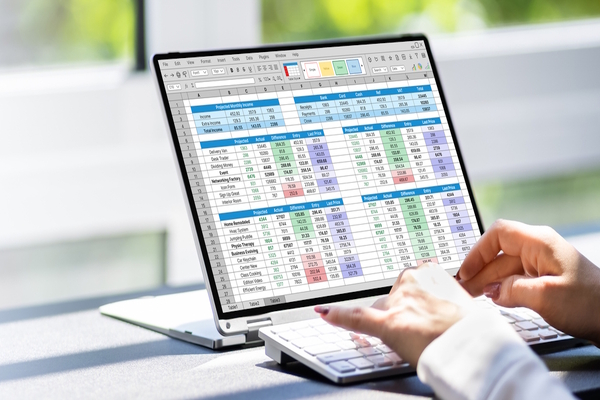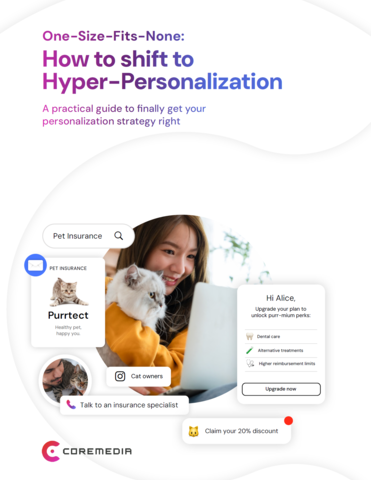Enterprise data and machine learning

Jared Burns at DoiT International explains how to use machine learning to understand and harness your data
As companies expand, many become guilty of saving and harbouring their data without knowing what to do with it. As a result, businesses are exposed to poor data governance, putting themselves at various risks such as outages or cyber-security threats.
With 60% of enterprise data being stored in the cloud, how much is being actioned into valuable data? Company leaders who are oblivious to their company’s data usage need to discover the true value of data, and in turn, add value to their data, rather than viewing it as a regulatory burden.
The end goal is for businesses to understand the importance of their data and the optimal ways to harness its value. Implementing machine learning (ML) models can help use data to its full potential – especially when it’s essential to tread carefully around regulations.
Bigger does not always mean better
Over 81% of business data is unstructured, and therefore, isn’t being utilised to its full potential. Businesses that are putting themselves under the strain of storing and hoarding data improperly will land themselves in a hot pocket of regulatory issues and missed opportunities.
Not only is there a stress of non-compliance, but companies cannot utilise saves upon saves of data because there is simply too much of it. It is difficult to properly understand, analyse and then apply actionable data because of its sheer volume.
On top of this, 83% of companies storing in the cloud have the additional pressure of losing control of their data entirely – and into the ether it goes. If cloud adoption isn’t refined, companies are at risk of losing control over their data, improper migration, and signing expensive, fixed contracts without the proper research.
The plaster that is machine learning
Whether it’s a new business start-up or a legacy company with decades worth of stored data, adopting ML into a business’ working patterns can help turn those data sets into something useful.
ML can help identify different patterns within data and turn those into forecasts for potential outcomes and recommendations, which will not only help the business think ahead and future-proof the company but can deliver unique insights to customers, creating immediate commercial value.
Unfortunately, an issue that is often overlooked before starting the process of adoption is poor data quality. Businesses need to prioritise data quality from the very start, to ensure that their ML models are utilising optimal data, which could result in inaccurate forecasts.
The second step to factor in, after all the data is spick and span, is which type of ML will help the business. The worst thing a company can do at this stage is to adopt every and all models of ML and ultimately sink money and resources in the process, as the risk would outweigh the reward if the ML implemented is useless to the dataset.
IT executives need to use a ‘try before you buy’ initiative before jumping into investments, especially as every company will have different requirements and use cases to best fit them – you wouldn’t purchase a pair of shorts if you’re moving to Antarctica! The learning curve here is ensuring that leaders are investing in the best models for their businesses.
Taking into account the maintenance costs of the ML models, it’s not a case of one-size-fits-all.
What are the outcomes?
With today’s constant battle against macroeconomic challenges, businesses must invest in the right strategies to get ahead of their competitors. In sectors such as retail, the climate and expectations are continuously changing to adhere to customer demands.
Using the correct ML model for your business can give you that added edge, by highlighting and actioning your data into forecasts, showing where customers’ interests are piquing, and then offering said customers recommendations based on their data.
Customers’ experiences will improve through actionable data, offering personalised advertisements, recommended songs based on listening, or even offering a weather report for the coming days. Examples of positive outcomes include returning customers, or retention of customers through loyalty programs.
Overall, businesses need to start utilising the most effective and helpful card they have up their sleeve: data! These companies already have the information they need to push ahead of competitors – it’s just a matter of whether they are ready to adopt the best ML model for them to take the next step.
Taking a step back and observing the bigger picture, not only is ML helping businesses internally by offering forecasts and analytics, but it can also support the end customer by helping them “pick the right pair of jeans.” For everyone involved, it’s all about the right fit!
Jared Burns is Staff Cloud Data/ML Architect at DoiT International
Main image courtesy of iStockPhoto.com

Business Reporter Team
Most Viewed
Winston House, 3rd Floor, Units 306-309, 2-4 Dollis Park, London, N3 1HF
23-29 Hendon Lane, London, N3 1RT
020 8349 4363
© 2025, Lyonsdown Limited. Business Reporter® is a registered trademark of Lyonsdown Ltd. VAT registration number: 830519543





